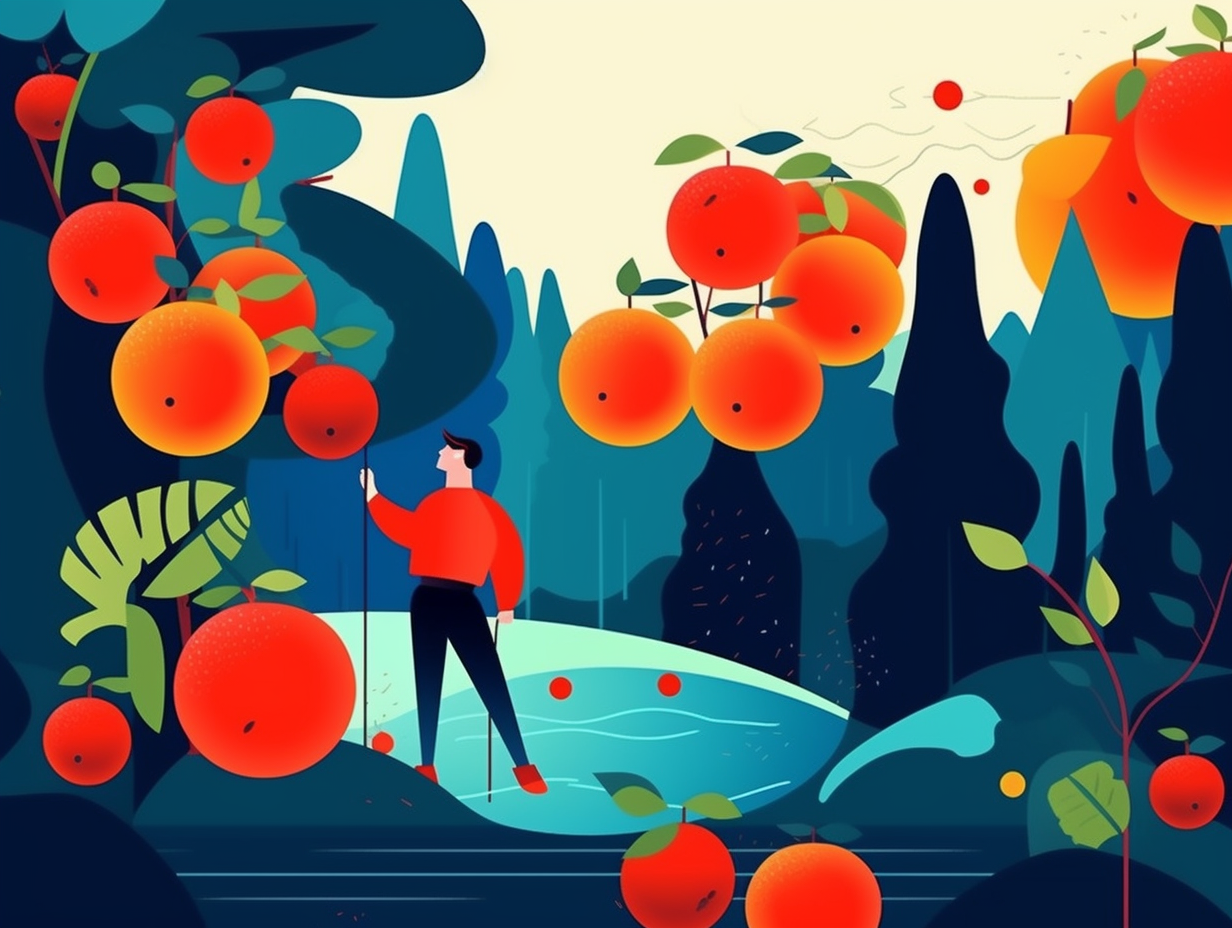Discover the Science of Fat: Top 14 Fun and Surprising Facts About Lipids You Didn't Know!

1. Omega-3 Munchies
Well butter my biscuit and call me omega: Mammalian cells can't synthesize certain unsaturated fatty acids like omega-3s, meaning it's up to us to munch on the right foods to get those essential lipids!
Source => news-medical.net
2. Lipids: Life of the Cell-ebration
Feeling a bit "hydrophobic"? Don't worry, lipids were born to be wild, waxy, and wiggly - they're just the life of the cell-ebration: In a world full of fats, fat-soluble vitamins, and their very own lipid categories, these versatile molecules have both party tricks and life-saving maneuvers, from energy storage to cell membrane structure, and even special guest appearances in your cosmetics and the food you eat. Love them or hate them, lipids always save you a slice of the good life.
Source => en.wikipedia.org

Did you know that one tablespoon of unsalted butter contains over 400 fatty acids and up to 14% of the recommended daily allowance of vitamin A? Discover the surprising health benefits of this buttery vitamin-packed delight!
=> Fun Facts about Fats
3. Lipids: Cellular Bouncers
Lipids may have a love-hate relationship with water akin to cats and baths, but these hydrophobic molecules are the ultimate bouncers for cells: They create a protective barrier around every cell, managing the guest list for who gets in and out while providing energy, and even playing a crucial role in hormonal production and regulation.
Source => homework.study.com
4. G.I. Joe of Molecules
Lipids: they're like the mix-and-match action figures of the cell world, with each tiny tweak in their structure giving them a whole new superhero skill! Move over, G.I. Joe, we've got some lipid powerhouses on our hands: these vital cellular membrane components play crucial roles in biological functions, and even minor changes in their structure can lead to substantial shifts in cell behavior, with some alterations being linked to various diseases.
Source => pubmed.ncbi.nlm.nih.gov

5. Vitamin E: Membrane Shield
Whoever said laughter is the best medicine clearly never met vitamin E: a potent antioxidant found in vegetable oils, nuts, seeds, whole grains, and wheat germ that shields cell membranes from oxidative destruction. This unsung hero isn't keen on hanging out with animal foods, so grown-ups must rely on consuming 8 mg of α-tocopherol equivalents (α-TE) daily for optimal results!
Source => ncbi.nlm.nih.gov
6. Fashion Stylists of Cells
Lipids might not be walking the runway anytime soon, but they're definitely working behind the scenes like the world's best fashion stylists for our cells: Lipids play a crucial role in maintaining cell membrane fluidity and permeability, working alongside phospholipids, cholesterol, and proteins to create a flexible, sensitive, and secure barrier that lets cells communicate and interact with their environment in a controlled manner, while carbohydrates on their outer surface strut their immune-boosting stuff.
Source => khanacademy.org
7. Grease for Genius Minds
From braniacs to nutty professors, it's clear that lipids are quite the grease for genius minds: Essential for brain function, hormone production, and energy storage, healthy lipids like omega-3 and omega-6 fatty acids can be found in fish, nuts, and seeds, and can even help improve cholesterol levels and reduce heart disease risk when consumed in moderation.
Source => medlineplus.gov
8. Waxy Wonders
Who knew waxy ears and leafy greens had so much in common? It's true: waxes, a type of long chain nonpolar lipid, can be synthesized by both animals and plants, serving as a protective coating for the latter and a honeycomb construction material for bees, while synthetic waxes find their way into chewing gum, adhesives, and cosmetics.
Source => bio.libretexts.org
9. Lipid Ninjas
Who said fats are no fun? They must not have met omega-3! This elite club of fatty acids can be found hobnobbing with their fishy, nutty, and seed-filled pals, and they're here to protect your brain, heart, and keep inflammation at bay like cute little lipid ninjas: The truth is, lipids like omega-3 play a crucial role in our overall health, performing tasks such as reducing inflammation, promoting heart health, and supporting proper brain function–just look for them in fish, nuts, and seeds.
Source => betterhealth.vic.gov.au

10. Lipid Crusaders of Skincare
Behold, the superheroes of skincare: Lipid Crusaders! With their potent power of protection, they battle the heinous H2O and electrifying villains of the epidermis: And now for the serious reveal: Lipids, made up of ceramides, cholesterol, and free fatty acids, not only guard your skin from losing water and electrolytes, but also regulate their movement through your outer skin layers, ensuring healthy and plump dermal finery.
Source => ncbi.nlm.nih.gov
11. Sterols: Life of the Membrane Party
Did you hear about the lipid party where sterols were the life of the night, fluidly moving between guests and keeping everyone's spirits up? Well, it turns out they're just as lively in real life too: sterols, found in mammals, plants, fungi, and bacteria, actually maintain and regulate membrane dynamics, ensuring fluidity for essential biological processes while evolving their molecular structures.
Source => ncbi.nlm.nih.gov
12. Cellular Hokey-Pokey
Think lipids are just sitting there in your cells, twiddling their thumbs like good-for-nothing couch potatoes? Think again, my friends: these sneaky molecules shake things up by assisting in the cellular hokey-pokey of second messenger signaling. Yes, that's right: lipids, like phospholipids, can be hydrolyzed by enzymes to create lipid second messengers such as diacylglycerol (DAG) and phosphatidylinositol 3,4,5-trisphosphate (PIP3), which then tango with downstream effector proteins to propagate the essential signals within your cells. Talk about being movers and shakers!
Source => ncbi.nlm.nih.gov
13. Triglyceride Powerhouses
Lipids are like those extra pockets in your favorite pants: they pack a powerful punch of energy when you need it most, doubling the efficiency of carbs and proteins in the energy game! Seriously, triglycerides: a type of lipid, offer more than twice the energy per unit mass compared to carbohydrates and proteins. This means fat molecules are essential in powering up the human body, stepping up during low glucose levels by turning into acetyl CoA molecules, thereby fueling aerobic respiration to generate ATP.
Source => courses.lumenlearning.com
14. The Butter and Olive Oil Mystery
If you've ever wondered why butter refuses to chill out and turn into a liquid at room temperature like its friendly neighbor, olive oil, the mystery goes beyond their personalities: The melting point of lipids is affected by both their degree of saturation and the size of their molecules. Animal lipids like lard and butter have higher melting points due to their increased saturation and larger, more complex molecules compared to the unsaturated, easygoing fats found in plant-based oils.
Source => nku.edu
Related Fun Facts




















